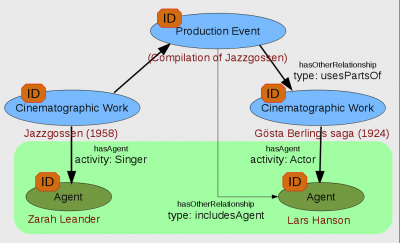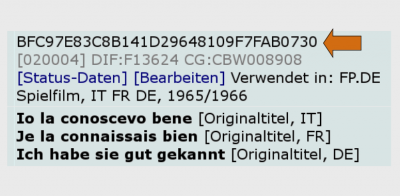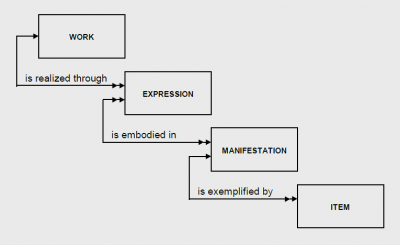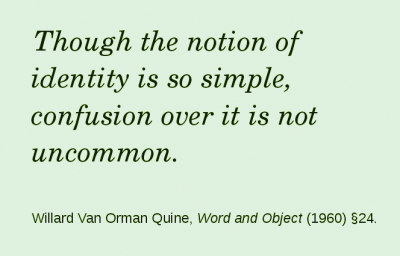Difference between revisions of "No entity without identity"
From filmstandards.org
(→Where philosophers can help) |
|||
| (3 intermediate revisions by the same user not shown) | |||
| Line 15: | Line 15: | ||
In the relationship graph from the preceding session we identified instances of Cinematographic Work by a '''title''', and instances of Agent by a '''name'''. | In the relationship graph from the preceding session we identified instances of Cinematographic Work by a '''title''', and instances of Agent by a '''name'''. | ||
| − | As databases grow, titles and names can quickly '''become ambiguous''', while machines require | + | As databases grow, titles and names can quickly '''become ambiguous''', while machines require unambiguous indentifiers for operating on relationships. Moreover, in this example we have an instance of an Event entity, for which no "natural" identifier exists. |
|} | |} | ||
| Line 42: | Line 42: | ||
No bureaucracy without identifiers. | No bureaucracy without identifiers. | ||
| − | An identifier such as "58981" can only be '''unique within a''' particular '''scope''' | + | An identifier such as "58981" can only be '''unique within a''' particular '''scope'''. In this case, the scope is the set of censorship records from the German ''Filmprüfstelle'' in Berlin. |
In databases, the scope of an identifier is usually limited to an entity from the data model. In this way, different entities can share the same set of identifiers, e.g. a Cinematographic Work 12345 can be distinguished from an Agent 12345. | In databases, the scope of an identifier is usually limited to an entity from the data model. In this way, different entities can share the same set of identifiers, e.g. a Cinematographic Work 12345 can be distinguished from an Agent 12345. | ||
| Line 106: | Line 106: | ||
Such assessments of identity cannot be made on the basis of a metadata standard alone. | Such assessments of identity cannot be made on the basis of a metadata standard alone. | ||
| + | |} | ||
| + | |||
| + | {| style="float: right; border: 1px solid #BBB; margin: .46em 0 0 .2em;" | ||
| + | |- | ||
| + | | width="810px" style="background-color:#F0F0F0" | | ||
| + | References and Materials: Identity and identifiers | ||
| + | * [http://www.athenaeurope.org/getFile.php?id=779 Persistent Identifiers (PIDs): Recommendations for Institutions.] <i>- A useful guideline from the ATHENA project, April 2011</i> | ||
| + | |} | ||
| + | |||
| + | {| height="20px" width="100%" | ||
| + | |- style="text-align:center; " | ||
| + | |<span style="color:#808080"> • Previous: [[Relationships: An essential component of art and culture]] • Up: [[TC 372 Workshop Compendium|Contents]] • Next: [[Description levels: A worked example]] • </span> | ||
| + | |- | ||
|} | |} | ||
Latest revision as of 20:12, 1 July 2011
From the TC 372 Workshop Compendium
Where philosophers can help
Any statement about something must identify the thing in question. Introducing description levels into metadata also means introducing different concepts of identity.
 From: Internet Movie Database, http://www.imdb.com/ accessed 13-Oct-2010 |
For many years, the creators of the Internet Movie Database (and also those of Wikipedia) believed that all things of interest could be identified uniquely and persistently by a name, a title, or similar. This identifier scheme turned out to be difficult to manage as the databases grew in size. In recent years, both databases have introduced non-semantic identifiers in the form of numbering schemes that remain hidden from the user interface. |
|
References and Materials: Identity and identifiers
|
| • Previous: Relationships: An essential component of art and culture • Up: Contents • Next: Description levels: A worked example • |





